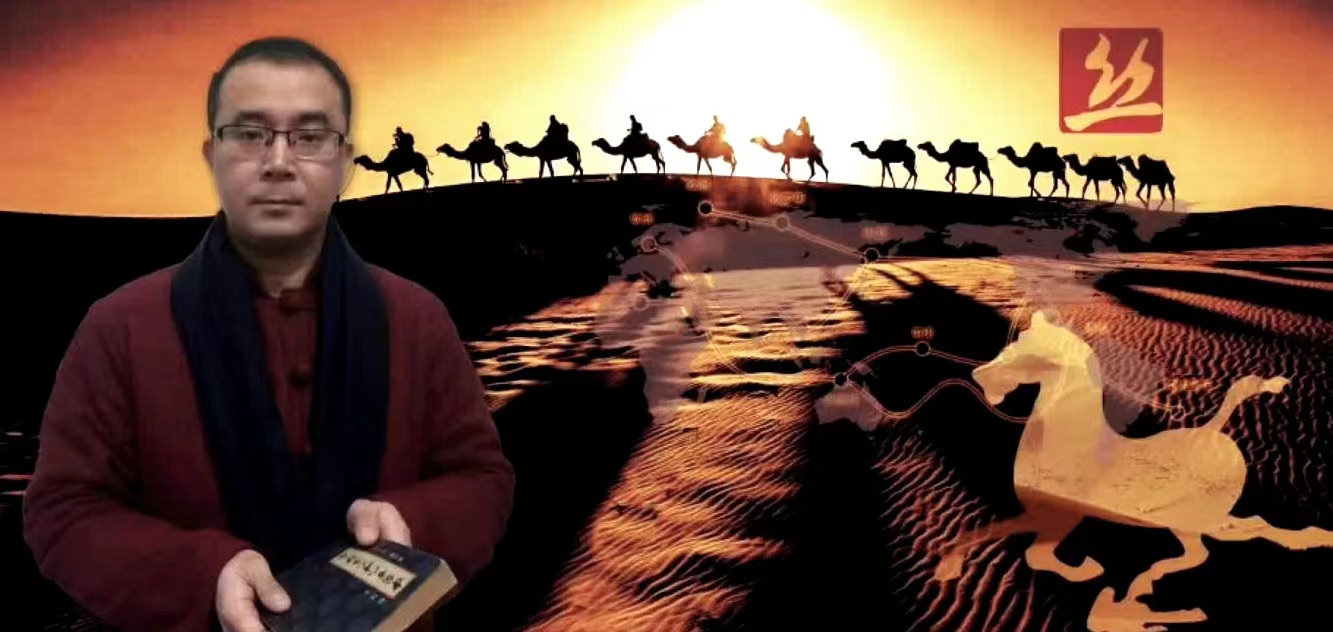

 全国免费客服电话 400 8749 119
全国免费客服电话 400 8749 119 邮箱:461613058@qq.com
手机:17050286333
电话:400 8749 119
地址:香港旺角花园街2-16号好景商业中心16楼
发布时间:2024-06-20 人气:391
黄微言:Huang Weiyan
中国茶宗第23代宗主
The 23rd generation of Chinese tea patriarchs
著名茶学家A famous tea scientist
国礼书画家National courtesy book painter

茶起源于中国,盛行于世界。据不完全统计,全球超过10亿人从事与茶相关的工作,饮茶人口超过20亿。作为中华文明的重要组成部分,茶文化自古以来就与中国历史上不同时期的政治、经济、社会、对外交往发展密切相关。“以茶叙事”、“茶礼”频频出现在各种重要的外交场合,促进了世界文明的交流互鉴。千年来,茶文化经久不衰,中国茶文化在大国外交中扮演了什么重要角色?
Tea originated in China and is prevalent in the world. According to incomplete statistics, more than 1 billion people worldwide work in tea-related work, and more than 2 billion people drink tea. As an important part of Chinese civilization, tea culture has been closely related to the development of political, economic, social and foreign exchanges at different times in China's history since ancient times. "Tea narrative" and "tea ceremony" frequently appear in various important diplomatic occasions, promoting the exchange of world civilizations and mutual learning. For thousands of years, tea culture has endured, what important role has Chinese tea culture played in the diplomacy of great powers

千年经久不衰的中国茶文化
The enduring Chinese tea culture
茶是一片凝结着中华民族劳动智慧的树叶,也是一杯回味中国传统文化的健康饮品,还是一份历史悠久的绿色文化遗产、一张呈现给世界的闪耀中国特色的名片。
Tea is a leaf that condenses the wisdom of the Chinese nation's labor, is also a healthy drink that reflects traditional Chinese culture, or a historic green cultural heritage, a shining Chinese characteristics presented to the world business card
它起源于中国,初为药用。《神农本草经》记载“神农尝百草,日遇七十二毒,得荼(茶)解之”,东汉华佗《食经》也有记载“苦茶久食,益意思”都体现了早期茶的医学价值。人们将茶作为药用的过程中,逐渐发现茶的药性较弱,却具有提神醒脑的功用,因此茶逐步转为一种饮品。早在春秋战国时期,华夏民族即已开始饮茶,到秦汉时期饮茶之风逐渐传播开来。至汉代,伴随着成套茶具的出现,饮茶的基本流程得以形成。到了唐代,“一生为墨客,几世作茶仙”的陆羽著《茶经》,对茶道与茶艺进行系统阐述,标志茶文化达到新的高度。在经济文化空前繁荣的宋代,茶文化广为流传,点茶和斗茶之风开始兴盛。明代,饮茶流程大为简化,由煎煮法改为冲泡法,促进了花茶、乌龙茶、红茶等诸多茶种的兴起和发展。到了清代,中国茶已誉满全球,红茶、绿茶、青茶、黄茶、黑茶、白茶六大茶类一应俱全。时至今日,茶的种植和加工仍在不断精进之中。
It originated in China and was first used for medicinal purposes. "Shen Nong Herbs" records that "Shen Nong tasted grass, the day encountered seventy-two poisons, de-ting (tea) solution", the East Hanhua "Food Book" also recorded "bitter tea long-term food, beneficial meaning" all reflect the medical value of early tea. People take tea as a medicinal process, gradually found that tea is weak, but has the function of refreshing the mind, so tea gradually turned into a drink. As early as the Spring and Autumn Warring States period, the Chinese people have begun to drink tea, to the Qin and Han dynasties tea gradually spread the wind. To the Han Dynasty, with the emergence of tea sets, the basic process of tea drinking was formed. To the Tang Dynasty, "a lifetime for ink customers, several generations as tea fairy" Lu Yu's "Tea Book", the tea ceremony and tea art for systematic elaboration, marking the tea culture reached a new height. In the Song Dynasty, where economic and cultural prosperity was unprecedented, tea culture was widely spread, and the trend of ordering tea and fighting tea began to flourish. In the Ming Dynasty, the tea drinking process was greatly simplified, from frying method to brewing method, promoting the rise and development of flower tea, oolong tea, black tea and many other tea species. To the Qing Dynasty, Chinese tea has been well-known all over the world, black tea, green tea, green tea, yellow tea, black tea, white tea six tea categories are readily available. To this day, tea cultivation and processing is still in progress
中华茶文化独具特色,不仅体现在悠久历史的种茶、制茶、饮茶等茶事上,更体现在形式多样的茶礼、茶会、茶宴上。中国自古以来即为“礼仪之邦”,素喜以茶待客,并形成了相应的饮茶礼仪,斟茶礼、持杯礼、座次礼、奉茶礼、叩指礼等形成了一套完整的中华传统礼仪规范。在茶会、茶宴方面,早在魏晋南北朝时期,江南便将“客坐设茶”作为普遍的待客之礼,可见以茶待客的礼仪源远流长、由来已久。到唐朝,以茶待客已成为全国性的礼俗。茶已深深融入中国人的物质生活与精神生活,积淀出千姿百态、各具风采的茶俗,有着鲜明的地域和民族特色。大碗茶盛行于北方,凉茶则多见于南方。江浙一带喜饮龙井茶,闽粤台等地偏好小杯啜饮功夫茶,而川渝地区保留着喝盖碗茶的习俗。各族人民也形成了颇具民族特色的茶文化,诸如白族三道茶、苗族菜包茶、布朗族酸茶、哈尼族煎茶、佤族烧茶和擂茶、藏族酥油茶等。
中华茶文化可以融入当地的饮食文化,一如美国人爱好冷饮,便在茶水中加入冰块、冰屑或刨冰,配上糖、柠檬片、果汁和酒等调味品,成为冰茶;英国人在茶中加入牛奶和糖,调出了英式红茶,配上茶点在下午时间享用,形成了著名的英伦下午茶文化;非洲人习惯在茶中加入薄荷与方糖,制成炎热酷暑中的甘醇清爽的饮品。中华茶文化可以融入当地的礼仪文化,一如高丽五行茶礼展示的是向茶圣炎帝神农氏神位献茶典礼。中华茶文化可以融入当地的政治宗教信仰等人文元素,一如日本沿袭了唐代传统的制茶技艺,形成了仪式繁复的抹茶道、煎茶道等日本茶道。中华茶文化与世界各地的万千景象同存共生,这就是独具特色、和而不同的中华茶文化之道。
Chinese tea culture can be integrated into the local food culture, just as Americans like cold drinks, then add ice cubes, ice chips or plank ice in tea, with sugar, lemon slices, juice and wine and other condiments, become iced tea; Chinese tea culture can be integrated into the local etiquette culture, as Gaoli five-line tea ceremony is displayed to the tea of the emperor of the holy emperor Nong's shrine tea ceremony. Chinese tea culture can be integrated into the local political and religious beliefs and other human elements, just as Japan followed the traditional tea-making techniques of the Tang Dynasty, forming a ceremonial complex matcha tea ceremony, fried tea ceremony and other Japanese tea ceremony. Chinese tea culture coexists with thousands of scenes around the world, which is the unique and different way of Chinese tea culture

走向世界的中国茶文化
Chinese tea culture to the world
通过茶境、茶修、茶性,精神层面的中华茶文化体现出中国人的一种价值观念。在中华文明中,茶被赋予含蓄内敛的气质,被寄托淡泊明志、宁静致远的修为。如果说大口喝酒折射出中国人热情豪迈的一面,那么小口饮茶正体现了含蓄内敛的另一面。饮茶之道,绝不只是满足口腹之欲,更是一种修身养性,重在修炼清净平和的心境。在中华茶文化的世界中,讲究不显山露水却润物无声,在潜移默化中释放文化的魅力。中华茶文化广泛吸收了儒、释、道诸家精华,形成了含蓄内敛的风范,强调修身养性,是中国传统文化“内省修行”的一种体现,借“茶以载道”宣扬茶文化中“静”的工夫与修养。纵观古今,静在茶性、茶境、修道中添上了浓墨重彩的一笔,文人墨客、羽士高僧莫不将“静”作为修习之道,正如古语所云“欲达茶道通玄境,除却静字无妙法”。儒家言“定而后能静,静而后能安”,以茶养静;道家言“虚极静笃”“静则明”,以茶求静;佛家曰“禅茶一味”,以茶助禅。茶,带着含蓄内敛的韵味,营造出宁静的氛围,培养着虚静空明的心境,引领着人与自然的融合交汇,最终达到“天人合一”的自在意境。
Through tea environment, tea repair, tea, spiritual level of Chinese tea culture reflects a Chinese values. In Chinese civilization, tea is given a subtle and introverted temperament, is pinned on the light Po Mingzhi, quiet and far-fluency for the repair. If a large mouthful of drinking reflects the Chinese warm and bold side, then a small mouthful of tea is reflected in the other side of im
茶香宁静可以致远,茶人淡泊可以明志。晚唐宰相裴汶在《茶述》中说,“茶……其性精清,其味浩洁,其用涤烦,其功致和。参百品而不混,越众饮而独高”。唐代诗人韦应物在《喜园中茶生》一诗中也说:“洁性不可污,为饮涤尘烦。此物信灵味,本自出山原。”宋徽宗在其著述《大观茶论》的序中言“至若茶之为物,擅瓯闽之秀气,钟山川之灵禀,祛襟涤滞,致清导和,则非庸人孺子可得而知矣。中澹闲洁,韵高致静,则非遑遽之时可得而好尚矣”,更加全面地阐述了“致清、导和、韵高、致静”的茶文化内涵。几千年来,中国人通过采茶、制茶、辨茶、烹调、品饮的茶事活动来锤炼茶文化的精神,远离尘垢、净化心灵、冶炼品质、提升修养、荡涤心性。
Tea fragrance quiet can go far, tea people can be clear. In the evening, Tang Zhai Xiangwen said in "Tea Book", "Tea ... Its sexual refinement, its taste is vast and clean, its use of polyester, its merit and. Refer to a hundred products without mixing, the more people drink and only high." Tang Dynasty poet Wei Ying object in the "tea in the garden" poem also said: "cleanness can not be polluted, for drinking dust." This thing is spiritual, this from the mountain original. Song Huizong in his book "The Great View of Tea Theory" in the preface to "to if tea as a thing, good at the beauty of the spirit, Zhongshan and Sichuan spirit, the slugs, to clear guidance and, then the non-mediocre mule can be known." In the idle clean, rhyme high quiet, then not the time to get good and good", more comprehensively expounded the "clear, guide, rhyme high, quiet" tea culture connotation. For thousands of years, Chinese through tea picking, tea making, tea, cooking, drinking tea activities to temper the spirit of tea culture, away from dust, purify the mind, smelting quality, improve cultivation, cleansing
尽管中华茶文化具有平和淡然、含蓄内敛的自然属性,但是饮茶促进了人与人之间的交流,使茶文化天然具有开放共享、促进交流的社会属性。中国茶早在千年前就已走出国门,以多种形式传播至全世界,时至今日,茶已成为世界三大饮品之一,全球产茶国和地区达60多个,茶叶产量近600万吨,贸易量超过200万吨。2019年12月,联合国大会宣布将每年5月21日确定为“国际茶日”,以赞美茶叶的经济、社会和文化价值,促进全球农业的可持续发展。茶文化以其独特的魅力走向世界,架起了多元文化的沟通桥梁。
Although Chinese tea culture has the natural attribute of plainness and introspection, tea drinking promotes communication between people, so that tea culture naturally has the social attribute of open sharing and promoting communication. Chinese tea as early as a thousand years ago has been out of the country, spread to the world in various forms, today, tea has become one of the world's three

在此之后,日本僧人南浦昭明学得茶宴、斗茶等饮茶习俗,并带回大量的中国茶典籍及茶具。在此基础上,日本茶道初见雏形。二是通过贸易的方式传播,形成了著名的古代丝绸之路、茶马古道、茶船古道。三是通过外交的方式传播,中原王朝派出的使节将茶叶作为贵重的礼物馈赠他国。中国茶最初传入俄国是在明万历四十六年(1618年),当时的明朝政府公使携带数箱茶叶,从蒙古边界用骆驼由陆路经过十八个月的艰难旅程,将茶叶转运到莫斯科,作为珍贵的礼物赠予当时的俄国沙皇。四是通过中国种茶专家指导,促成茶树本地化种植。俄罗斯、巴基斯坦等国家都是在中国派出专家现场技术指导后,种植茶树才得以成功。
After this, the Japanese monk Nampo Zhaoming learned tea-drinking customs such as tea banquets and tea-fighting, and brought back a large number of Chinese tea books and tea sets. On this basis, the Japanese tea ceremony is beginning to take shape. Second, through the way of trade spread, formed the famous ancient Silk Road, tea horse ancient road, tea boat ancient road. Third, through diplomatic means of communication, the Central Plains Dynasty sent envoys to tea as a valuable gift to other countries. Chinese tea was first introduced to Russia in the 46th year of the Ming calendar (1618), when the Ming government minister carried several boxes of tea, from the Mongolian border by camel by land after 18 months of arduous journey, the tea was transferred to Moscow, as a precious gift to the then Russian Tsar. Fourth, through the guidance of Chinese tea experts, to promote the local cultivation of tea trees. Russia, Pakistan and other countries are in China sent experts on-site technical guidance, the cultivation of tea trees to be successful
中国茶的传播之路,历时数千年,通过陆路实现了对中、西亚、欧洲、俄罗斯、东亚的传播,通过海路先后完成了对朝鲜半岛、日本和欧洲的传播。正如习近平主席在2017年首届中国国际茶叶博览会的贺信所说:“中国是茶的故乡……从古代丝绸之路、茶马古道、茶船古道,到今天丝绸之路经济带、21世纪海上丝绸之路,茶穿越历史、跨越国界,深受世界各国人民喜爱。”中华茶文化是一种开放交流的文化,尽管自古以来流传着无数“走出去”的佳话,但也从不排斥“引进来”。
The spread of Chinese tea, which lasted for thousands of years, has been transmitted to China, West Asia, Europe, Russia and East Asia by land, and by sea to the Korean Peninsula, Japan and Europe. As President Xi Jinping said in a congratulatory message at the first China International Tea Expo in 2017: "China is the home of tea... From the ancient Silk Road, the Tea Horse Road, the Tea Boat Road, to today's Silk Road Economic Belt, the 21st century Maritime Silk Road, tea across

茶文化成为传递中国特色大国外交理念的文化使者
Tea culture has become a cultural messenger to convey the diplomatic concept of great powers with Chinese characteristics
中华茶文化,具有超强的融合力、亲和力和凝聚力,成为“和而不同、和谐相生”理念最强有力的佐证。正如习近平主席2015年10月访英期间在英国女王举行的欢迎晚宴上的祝酒辞所言:“中国的茶叶为英国人的生活增添了诸多雅趣,英国人别具匠心地将其调制成英式红茶。中英文明交流互鉴不仅丰富了各自文明成果,促进了社会进步,也为人类社会发展作出了卓越贡献”。2017年,首届中国共产党与世界政党高层对话会在京召开,会议海报选取了“茶”为主要创作元素,巧借中国以茶会友、品茶论道的文化传统,广邀世界政党探讨“构建人类命运共同体、共同建设美好世界:政党的责任”的对话会主题,传递“和而不同”“和谐相生”“美美与共”的理念,践行中国传统“和”文化。
Chinese tea culture, with strong integration, affinity and cohesion, has become the "harmony and different, harmonious birth" concept of the most powerful proof. As President Xi Jinping said in his toast at the Queen's Welcome Dinner during his visit to the UK in October 2015: "Chinese tea has added a lot of spice to British life, and the British have made it into English black tea with great ingenuity." The exchange and mutual learning between Chinese and British civilizations not only enriched the achievements of their respective civilizations, promoted social progress, but also made outstanding contributions to the development of human society." In 2017, the first high-level dialogue between the Communist Party of China and the world's political parties was held in Beijing, the conference poster selected "tea" as the main creative element, and by taking advantage of China's cultural tradition of tea party friends and tea tasting, invited the world's political parties to discuss the theme of the dialogue "building a community of human destiny and building a better world together: the responsibility of political parties", to convey the concept of "harmonious life", "beauty and common" and to practice Chinese tradition and culture
相关推荐